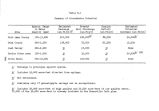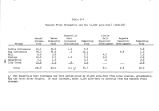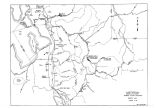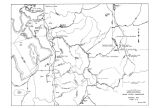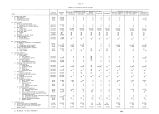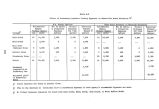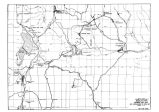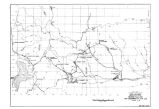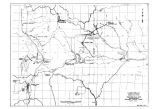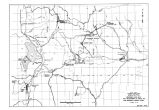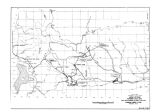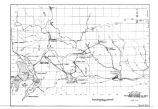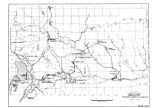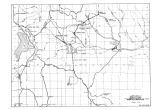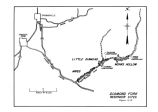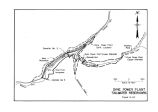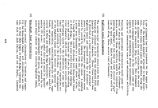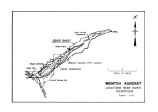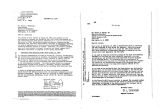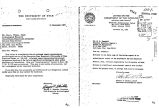| OCR Text |
Show Facilities for Conveying Water to Southern Utah Valley, Juab Valley, and Sevier River Basin Releases from the Diamond Fork Power System would be divided at the tailrace of the Dyne Powerplant. Part of the water would remain in Diamond Fork and would flow to Hayes Reservoir or Utah Lake for storage. The balance would be conveyed south to the Sevier River area and intervening points by either the Wasatch Aqueduct or the alternative enlarged Highline Canal. Several variations were or might be considered for either of these alternatives, including variations in scale of development, location and design of features, and method of construction. ( a) Wasatch Aqueduct Several alternative alinements and arrangements for the Wasatch Aqueduct are available. One would be a canal and pipeline system down Spanish Fork Canyon and then south along the mountainside and into the Goosenest area, in lieu of the tunnel portion described in Section A. Storage sites along the aqueduct to regulate winter releases through the power system were studied. Storage sites considered in addition to the existing Sevier Bridge and Mona Reservoirs include the proposed Sal Reservoir near Salem and Bear and Goosenest Reservoirs near Payson. The canal and pipeline alternative would involve heavy excavation, much of it in rock, along the side of the mountain. It is estimated that this alternative would create a scar totaling about 180 acres, compared to about 20 acres for the tunnel proposed in the Definite Plan Report. Another alternative would be an alinement at a higher elevation along the entire length of the aqueduct and the Mona- Nephi Canal which would connect with the Nephi- Sevier Canal alinement, thus eliminating the need for the Nephi Pumping Plant. This alternative would require excavation along the mountainsides above Utah and Juab Valleys for many miles. Construction scars along this alinement of the Wasatch Aqueduct would cover 480 acres and would be visible from great distances. However, after a period of 15 to 20 years, the vegetation, consisting primarily of oak, sagebrush, and various grasses would have been naturally restored, and the permanent remaining scar would be reduced to approximately 100 acres. 605 |


















































